Augmented reality has changed the way people interact with products online. This innovative technology impacts the e-commerce sector by providing immersive experiences that reduce the gap between digital and physical shopping.
Augmented reality enables viewing items within one’s own environment, allowing for engagement and confidence beyond traditional online methods. Product visualization in e-commerce has advanced greatly through augmented reality integration.
This progression allows shoppers to see how furniture fits living spaces, try on virtual clothing, or test makeup shades without leaving home.
This article will explore augmented reality’s benefits for retailers and customers. It will discuss application strategies and highlight successful case studies. It will also delve into augmented reality-powered visualization techniques and developing trends guiding the future of online commerce.
Understanding Augmented Reality in E-Commerce
Augmented Reality (AR) enhances the real world by overlaying digital information onto it. This allows users to see virtual objects in real spaces.
In online shopping, AR is changing how people interact with products. It connects the gap between digital and real shopping experiences.
AR for online shopping refers to adding digital things to the real shopping environment. This lets customers visualize what products would look like in their own space before buying.
Unlike Virtual Reality (VR), AR does not make people totally immersed in virtual worlds.
It combines imaginary elements with the real world around us. For e-commerce, AR bridges the difference between looking at items online and physically in stores. This technology brings virtual items into reality for online shopping.
AR vs. VR: Key Differences
While augmented reality and virtual reality each have the ability to enhance shopping, there are notable differences between the two.
AR augments the real world by overlaying digital components onto real environments. This allows users to maintain control over their real-world surroundings.
In contrast, virtual reality fully immerses users within a synthetic virtual world. When using VR, one’s movements and actions are controlled within the virtual setting.
Additionally, AR experiences can commonly be accessed through smartphones and other mobile devices, providing improved accessibility relative to virtual reality. VR typically necessitates specialized head-mounted displays, which can present greater technological hurdles.
Types of AR Applications in Online Retail
There are several kinds of AR technologies beneficial for e-commerce:
- Virtual try-ons: Allow shoppers to virtually try on clothing, accessories, or cosmetics, improving the online experience for fashion and beauty products.
- 3D product visualization: Enables customers to view products from every angle and place them virtually in their homes, aiding more informed decisions.
- Interactive displays: Project digital content onto physical surfaces to create engaging experiences in brick-and-mortar stores.
- Location-based AR: Provides users with location-specific information commonly employed in tourism and navigation programs.
- Contour-based AR: Outlines objects to boost visibility, primarily utilized in navigation-related software.
Augmented Reality Market Size
Following the impacts of the COVID-19 pandemic, the global augmented reality industry has continued on a pronounced expansion trajectory in recent years. Valued at USD 57.26 billion in 2023, forecasts anticipate the market expanding at an average annual rate of 39.8% through 2030.
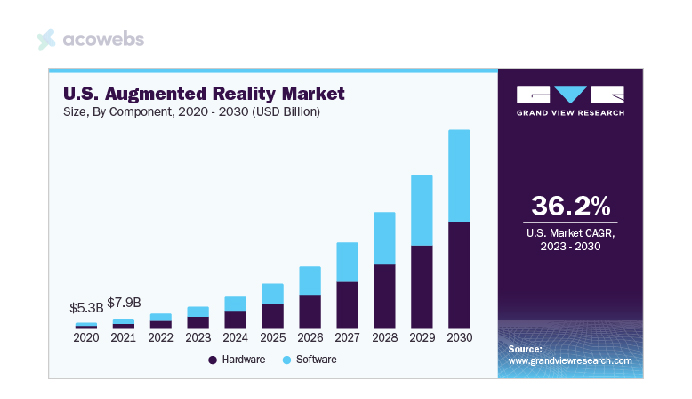
During this period, augmented reality applications have proven their usefulness across diverse fields. In retail specifically, companies have adopted AR solutions enabling an immersive “try-before-you-buy” experience for online shoppers.
Brands like IKEA, Home Depot, and luxury labels offer virtual try-ons of merchandise utilizing augmented reality technologies. Reports indicate such AR-enabled products see around a 94% increase in purchases versus non-augmented reality offerings.
The pandemic underscored augmented reality’s capability to enhance the digital shopping experience for consumers.
Benefits of AR for Product Visualization in E-Commerce
1. Enhanced Customer Experience
Augmented reality (AR) has transformed how individuals engage with products online, bridging the gap between digital and physical shopping.
By letting customers visualize items in their own environments, AR provides an immersive and interactive shopping experience. It allows seeing items such as furniture in living rooms, virtually testing clothing, or experimenting with makeup shades without leaving home.
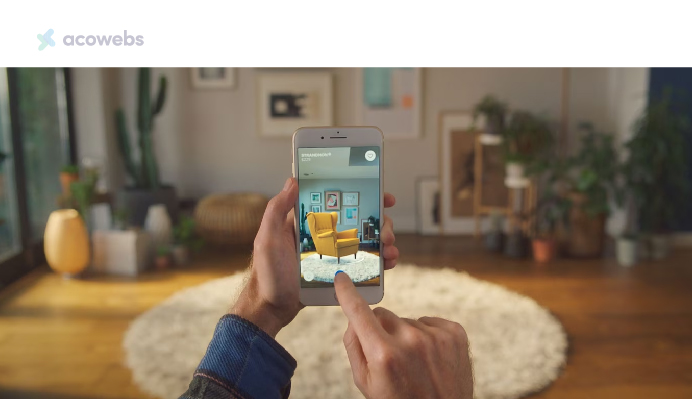
The option to “try-before-you-buy” solves uncertainties of online purchases, resulting in more assured decisions. This allows bridging the gap between online and in-person shopping through immersive product viewing assisted by augmented reality.
AR boosts the experience through interactive and realistic previews of what items may look like.
2. Reduced Return Rates
One of the most significant advantages of AR in e-commerce is its impact on return rates. Several studies have shown substantial decreases in returns when AR is used for product visualization in e-commerce:
- Shopify reports a 40% decrease in returns from 3D visualization.
- SeekXR reports a 25% decrease in returns from AR-guided purchases.
- Build.com experienced a 22% lower return rate for shoppers using AR product visualization features.
- Gunner Kennels achieved a 5% decrease in returns.
These reductions in returns are particularly beneficial for e-tailers operating on thin margins, as returns can significantly impact their bottom line.
3. Increased Conversion Rates
AR has been shown to have a positive effect on conversion rates in e-commerce:
- Web AR products can increase the conversion rate of online purchases by almost 30% and as high as 200%, depending on the product and implementation.
- Think with Google reveals that the conversion rate for products with AR content is 94% higher than those without AR.
- Overstock.com reported conversion rate boosts of up to 200% when customers used 3D and AR for product visualization.
4. Competitive Advantage
Embracing AR technology distinguishes retailers from competitors, displaying a dedication to innovation and customer-focused experiences. This distinction can attract tech-savvy buyers seeking a more engaging and personalized shopping experience.
The novelty of AR encourages customers to engage with advertising, browse online sites, or stay in physical stores, raising the likelihood of a sale. Implementing augmented reality solutions grants businesses a competitive edge over those who do not adopt this innovative approach.
Implementing AR in Your E-Commerce Strategy
1. Choosing the Right AR Technology
Incorporating augmented reality (AR) into online retail necessitates careful assessment of multiple aspects.
According to a 2019 report from market research firm WBR Insights, most retailers were unprepared for emerging technologies like artificial intelligence, chatbots, and AR in their mobile strategies.
In a survey of 100 senior executives, only 9% believed they could support such features, while over half (52%) could not. The biggest barriers to adoption cited were budget (64%), insufficient internal resources (55%), and lacking executive backing (42%).
While demand for AR experiences continues growing in 2024, merchants may still feel unequipped to include AR on shopping platforms. Such hesitancy stems from development cost concerns, identifying suitable uses, and maintaining the technology over time.
When choosing an AR solution, companies should focus on options that complement specific needs and consumer expectations. For instance, marker-based AR relies on set markers like QR codes or logos, whereas markerless AR scans environments to place digital elements.
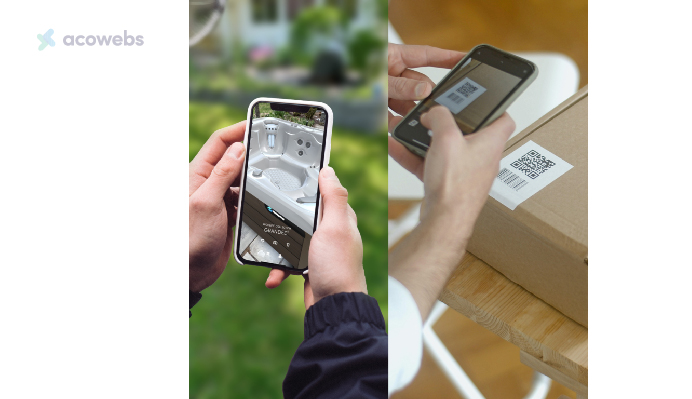
The decision depends on product characteristics and preferred consumer experience.
2. Integrating AR with Your Online Store
Integrating AR seamlessly into an e-commerce platform is crucial for success. Many popular e-commerce platforms now offer built-in support for AR experiences.
For example, Shopify’s core themes can display 3D renderings by default, allowing merchants to upload AR models as easily as they would upload images.
For custom implementations, businesses can leverage tools like Shopify’s AR Quick Look or seek assistance from specialized AR development agencies. The cost of creating 3D models has decreased significantly, making AR integration more accessible for businesses of all sizes.
3. Creating Engaging AR Experiences
To maximize augmented reality’s impact on e-commerce, retailers should focus on crafting interactive and captivating experiences. AR can help customers visualize products within their own spaces, virtually engage with apparel, or experiment with features of electronics and appliances.
Successful AR implementations have shown impressive results. For instance, when the clothing brand Rebecca Minkoff tested 3D designs, they found shoppers were 44% more likely to add an item to carts and 27% more likely to purchase after encountering an item in 3D.
Additionally, site visitors were 65% more likely to purchase after engaging with an AR-enabled product. Experimenting with 3D models demonstrates AR’s potential for enhancing user engagement.
4. Measuring AR Impact on Sales
In order to justify the investment in AR technology, it’s essential to measure its impact on sales and customer behavior.
Implementing AR can yield noteworthy progress in key performance indicators. For instance, Gunner Kennels reported a 3% rise in cart conversion rate, a 40% increase in order conversion rate, and a 5% decrease in return rate upon embracing AR.

By carefully selecting the proper AR technology, integrating it effortlessly into existing e-commerce platforms, crafting captivating experiences, and gauging impact, companies can benefit from AR to enhance customer satisfaction, reduce return rates, and ultimately spur revenue in today’s competitive e-commerce landscape.
Augmenting the Online Shopping Experience through AR Visualization and Engagement
1. Virtual Try-Ons for Fashion and Beauty
Virtual try-on (VTO) technology has modernized online purchasing experiences by enabling buyers to preview products before buying.
This technology incorporates augmented reality (AR), computer vision, and image processing techniques to overlay virtual representations of products onto videos, images, or real-time renderings of users.
Virtual try-ons have become quite popular for fashion and cosmetics, with 61% of buyers favoring retailers powered by this technology.
For makeup and beauty products, virtual try-ons let users see how distinct shades of lipstick, eyeshadow, or other products will look without physical application. This has been adopted by major companies like Estée Lauder, utilizing AR as a sales and marketing initiative.

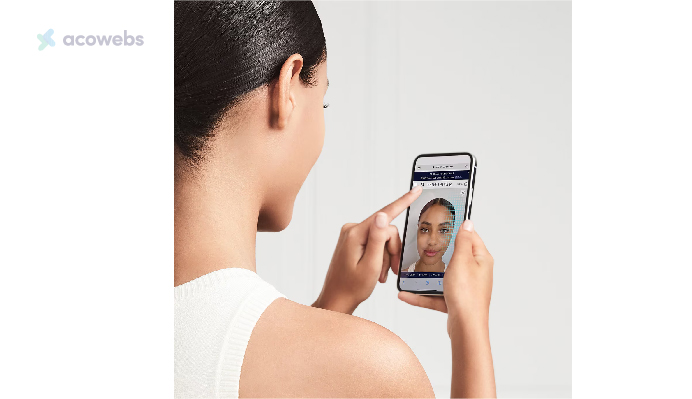
In fashion, virtual try-ons let buyers visualize how clothing may look on them, though complexity remains in replicating diverse body types and fabric behaviors.
However, continuous technological evolution aims to resolve this, potentially making virtual try-ons even more practical for evaluating sizing, fit, and overall appearance across various industries online.
2. 3D Product Modeling for Home Decor
AR technology has also made considerable progress in home decor, letting customers visualize furnishings and other items within their own living areas. This AR use lets buyers view how furniture fits in a room, aiding more knowledgeable choices.
3D item modeling through AR offers enhanced visualization, giving clients a superior sense of a prospective buy relative to standard 2D photos.
The improved visualization helps reduce returns and boost customer satisfaction within the home goods sector.
3. Interactive Product Demos
AR-powered interactive product demonstrations offer customers the opportunity to navigate through various features and functionalities of a product in a virtual space. This technology is particularly useful for complex products or those with multiple features.
For example, AR can showcase prototypes or conceptual design models even before they are physically made, allowing clients to visualize the final product, provide their feedback on it, and make the required tweakings in the development process.
These AR-powered visualization techniques provide numerous benefits for both customers and businesses. They allow more authentic merchandise representations, help customers make better purchase decisions, reduce return rates, and cultivate more pleasurable and memorable shopping experiences.
As AR technology evolves, it will likely assume an increasingly significant role in e-commerce product visualization and customer engagement.
4. Gamification
Augmented Reality (AR) gamification marketing combines gaming elements with AR technology to attract, engage, and retain customers in non-gaming contexts. This approach turns competition into opportunities for customers to win freebies or discounts, giving them a sense of accomplishment and bragging rights.
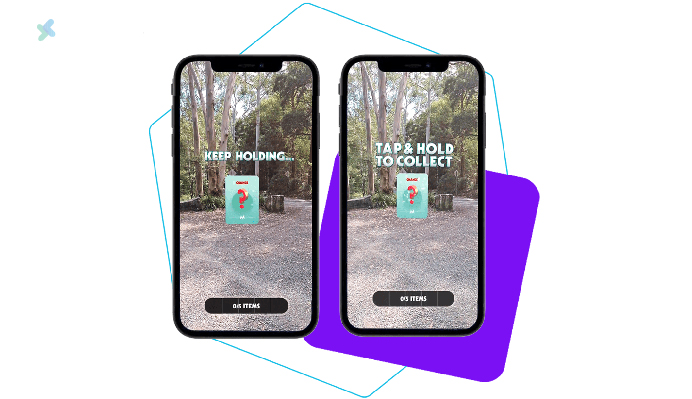
By gamifying the brand experience, businesses create a community where customers can interact with each other, fostering a deeper connection with the products and enhancing loyalty.
Gamification allows better control over the customer journey from brand awareness to purchase without feeling pushed. It encourages customers to share their experiences with friends and family, effectively advertising the brand across various platforms for free.
This organic approach often avoids traditional advertising techniques and ad blockers, appealing to customers through word of mouth, social media, and newsletters.
5. Social Sharing
AR experiences have a higher likelihood of being shared across social media platforms, potentially reaching viral status. More than 40% of users say they are more likely to share a social media AR experience than other types of brand posts.
This increased sharing leads to higher engagement metrics, including longer dwell times and higher click-through rates. The AR experiences that are more likely to be shared allow for social visualization of products.
6. Personalization and Recommendations
AR technology analyzes users’ features and preferences of customers to recommend personalized beauty or fashion products. This tailored approach increases customer satisfaction as it offers products that will align with the customer’s unique style and personas.
Personalized recommendations could impact a customer’s total cart amount, which offers relevant cross-selling and up-selling opportunities, which eventually drive revenue by positively
By analyzing users’ data, AR can provide personalized recommendations for products that can then be effectively visualized through AR technology. This personalized visualization simplifies the path to purchase.
Case Studies: Successful AR Implementations
1. IKEA Place App
KEA Place, launched in 2017, addresses practical issues in furniture shopping by allowing users to virtually place products in their surroundings. It addresses furniture shopping challenges through a “try before you buy” approach.
The research found the app provided more excitement and motivation than IKEA’s website alone. Users experienced increased fun and usefulness from visualizing items customized to their unique spaces, demonstrating AR’s ability to improve online shopping.
2. Sephora Virtual Artist
Sephora’s Virtual Artist feature allows users to try diverse lip shades virtually using augmented reality. The app employs facial recognition technology to precisely apply digital cosmetics to users’ faces in real time.
This successful AR implementation has proven an impactful marketing tool, potentially spurring experimentation and augmenting sales. Sephora’s incorporation of live 3D facial recognition is anticipated to increase conversion rates and user engagement.
3. Warby Parker’s Virtual Try-On
Warby Parker’s app enables users to virtually try on glasses using AR technology. The feature utilizes an iPhone’s AR capabilities and selfie camera to place digital glasses on a person’s face.
This innovative approach addresses the challenge of buying glasses online, offering customers a more accurate representation of how frames will look on their faces. The app also includes Apple Pay integration and SMS updates for a seamless purchase process.
Future Trends and Challenges in AR E-Commerce
The future of augmented reality (AR) in e-commerce appears promising, with swift expansion and surging consumer acceptance.
As previously stated, the AR market is forecasted to evolve at a compound annual growth rate (CAGR) of 39.8% from 2023 to 2030, signifying its substantial position in e-commerce’s future.
The projected increasing number of AR device users in forthcoming years also demonstrates the accelerating global adoption of AR.
Emerging AR Technologies
Integration with the Metaverse is a key trend, creating dynamic, computer-generated environments for interaction.
Major tech companies are investing intensely in AR innovations, such as Apple’s development of AR headsets and the rumored wearable AR glasses, signifying a future where AR becomes more integrated into everyday life.
As technologies advance, AR promises to reshape e-commerce by delivering ever more immersive and realistic digital experiences.
Overcoming Technical Limitations
Implementing AR in e-commerce presents several technical challenges. These include ensuring hardware compatibility across various devices, choosing appropriate development platforms, and creating high-quality 3D models.
Businesses must also consider connectivity, latency, and storage issues, as AR applications often rely on cloud support for heavy computations.
Privacy and Security Concerns
As AR becomes more integrated into e-commerce, privacy and security concerns are paramount. Ensuring data encryption, transparent data usage policies, and compliance with relevant data protection regulations is crucial for maintaining customer trust and protecting sensitive information.
Conclusion
As this article has demonstrated, augmented reality provides immense opportunities to enhance the online shopping experience for both customers and retailers.
By leveraging AR techniques like virtual try-ons, 3D modeling, interactive demos, and gamification, businesses can create memorable brand engagements that drive higher satisfaction and conversion rates.
Emerging technologies will continue pushing the bounds of immersive visualization in e-commerce even further in the near future. While technical limitations and privacy concerns require prudent consideration, the lucrative AR market is poised for exponential growth in the years ahead.
For e-commerce players seeking innovative ways to strengthen relationships with digitally-native audiences, implementing creative AR strategies presents a promising path well worth exploring.
Acowebs are the developers of Woocommerce Custom Product Addons which is a optimized, lightweight, and fruitful plugin that is simply the best to add extra product options using its custom form builder easily. WooCommerce custom fields also comes with drag and drop form builder, 22+ field types and custom price formula.












 Login
Login
 Cart
Cart







